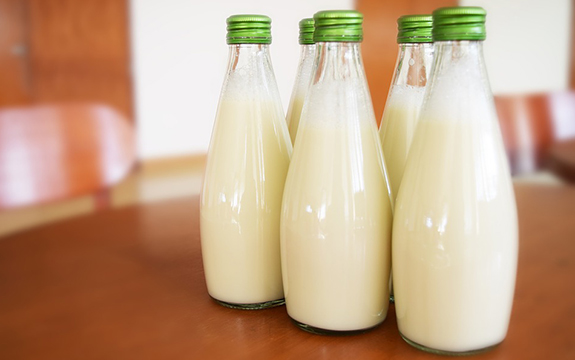Separating milk fats from fiction

In Summary
- This article featured in Swinburne’s new ‘Research Impact’ magazine, produced in association with Nature Publishing Group.
Using ultrasound waves to separate milk from its fats may lead to new, locally-manufactured food products, a team at Swinburne has found.
The idea to use ultrasound to separate milk was proposed as part of an early stage research project initiated by Australia’s Geoffrey Gardiner Dairy Foundation, which partnered with the CSIRO and Swinburne’s highly regarded ultrasonics group.
Richard Manasseh, an associate professor from Swinburne’s Department of Mechanical and Product Design Engineering, says, ‘The aim was to explore new technologies for future greenfields dairy plants that might give the Australian industry an advantage over the international competition.’
While centrifuges replaced traditional creaming (letting milk stand to separate naturally) in the 19th century, and are excellent for mass processing, they can damage fat globules which are important for taste and texture. The membranes of those globules also contain proteins which may have benefits in the treatment of conditions such as Alzheimer’s and breast cancer.
One aspect of the research considered the different types of milk product. While centrifugal processing skims all the fat from the milk, which is then replaced to achieve standardisation, ultrasound can achieve standardisation through measured extraction of the fat. However, whether ultrasound is a practical process to standardise milk needs to be investigated.
But this early research suggested other uses for ultrasound. For instance, ultrasound waves separate milk very gently, limiting damage to the fats which are also essential to the shelf life of dairy products. It also separates the fat globules into different sizes, each displaying different characteristics of smoothness and creaminess, which may lead to new products.
‘Centrifuge milk may be very unlike the milk that most people drank for the majority of history,’ says Manasseh. ‘But ultrasound produces the same globule distribution as natural creaming.’
Some boutique Victorian dairies and cheese producers may be the first to trial the new technique. This means that Australian cheese makers could make products similar to Italian parmesan, gorgonzola and pecorino romano cheeses, which in Italy are made from milk separated by traditional creaming methods.
‘Australia’s small makers are developing products based on tradition, but natural creaming presents food safety issues due to our climate and transport distances,’ says Manasseh.
Ultrasound offers an ideal solution. It’s fast, inexpensive, portable, works on a small scale, is easy to clean, and gives small businesses cost-effective control over their processes.
‘It appeals to boutique companies making traditional and innovative products. That’s where commercialisation lies.’

